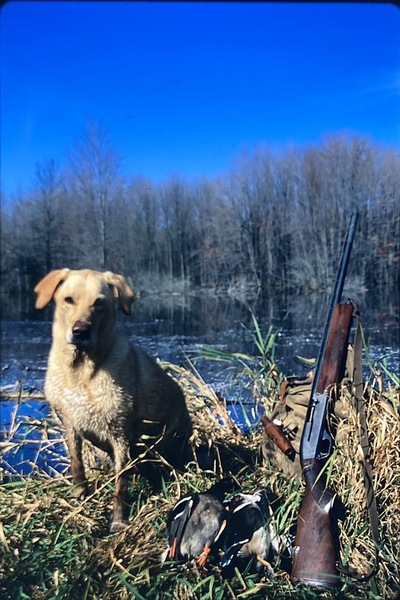An Ithaca Model 51A Magnum 12ga that had been heavily used as a waterfowling piece, and then neglected. I know bc I was the one who heavily used it, and neglected it.

Unbeknownst to me at the time, this was a gun that did not handle neglect well. This post details my efforts at resurrecting “one of the smoothest and softest shooting” of semi-auto shotguns. And the tribulations of owning one 35+yrs after production was discontinued and the company, Ithaca Gun Inc., went bankrupt. Unfortunately, the Model 51 has, over time, developed a secondary reputation, as one of the more troublesome of shotguns. Possibly, the “lifetime operational warranty” the 51 came with contributed to the company’s demise?
The gun is a simple one to tear down; It was meant to be easily serviced. But the issue that plagued it was not widely known until the guns began to fail over time, one by one. This issue then cascades into more significant trouble, leading one owner to describe the 51 as “a gun that is best owned by those willing to do a bit of gunsmithing”.
The Model 51A —the model I own— was an updated version released in the last few years of production, introduced in 1982, and tellingly advertised: “The most reliable soft-shooting auto-loading shotgun”. Despite whatever modifications were made, beyond an updated trigger assembly, the main issue that plagued the original Model 51’s durability apparently did not entirely go away.
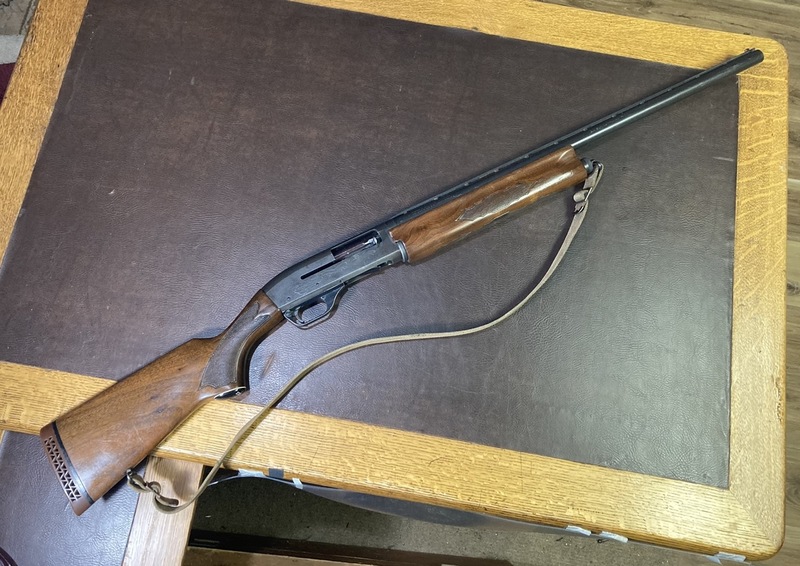
My 51A I acquired, used, from Diamond’s Gun Shop in Ithaca, NY sometime in the mid 90’s. Les Hovencamp, the former head gunsmith at Ithaca Gun, was the resident gunsmith at Diamond’s. I was already a fan of Ithaca shotguns, owning a couple of model 37 Featherweight pump-actions. One is a fast-handling short-barreled 16ga (ca.1961) that has served as my deer gun since 1978. The second is an English-stocked 6lb Ultra-Featherweight in 12ga (ca.1983), for various small game. I love my 37’s. Odd how one can come to ”love” a mechanical device. Guns, like fishing reels, can be extensions of…“us”, doing what we love: spending precious time in the natural world in ages-old purpose.
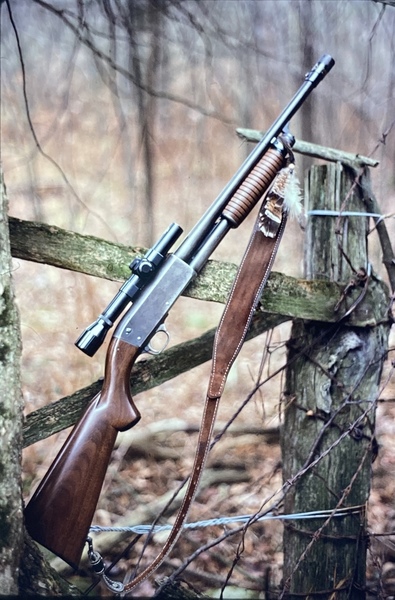
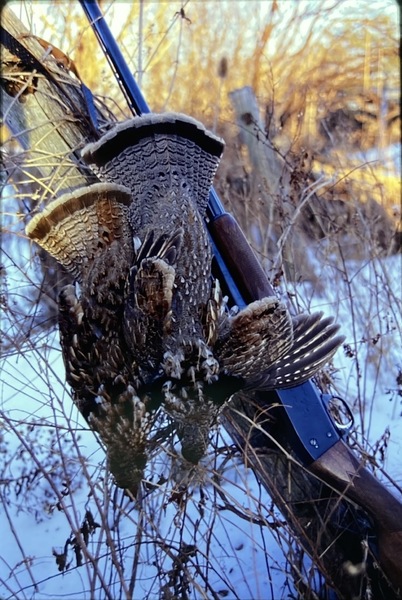
I acquired the 51A in even trade for my Ithaca Flues 16ga field grade double that I…never developed a love for. It was playing third fiddle as a grouse gun behind much lighter handling guns: the above mentioned UL37, and my first-string 6lb 12ga. Spanish double that simply fit me like a glove, giving me an instantaneous, perfect sight picture. However I needed a waterfowling gun, not wanting to shoot magnum steel loads out of either double or the UL37. Les had warned me not to shoot magnum loads out of the aluminum receiver’ed Ultra37. So, with Flues in hand, I headed over to Diamond’s to see what they could do.
The Flues may have been the better end of the deal compared with the 51A Magnum 12ga Les handed me. But I didn’t have a use for it and found the 51 such a well designed waterfowling gun: Parkerized (a durable, non-reflective finish), a quick handling 26” barrel for ducks over “deke’s”, and a 30” full choke for geese. “Deal!”, I said. And I came to appreciate it as my workhorse waterfowling gun. Note I said “appreciate”, not “love”. For me, going semi-auto in a scattergun is akin to going magnetic with a casting reel. Not that I am unwilling to use, and appreciate, such marvels of technological efficiency. But, something…lovely…gets lost in the process. Odd, too, from a more urban/detached perspective, that we can get romantic over... essentially a killing machine. I still wrestle with that, having kept feet in... a number of worlds.
By serial number, mine is a very late one, although no one seems to have records to more-than-ballpark 51's by SN's.
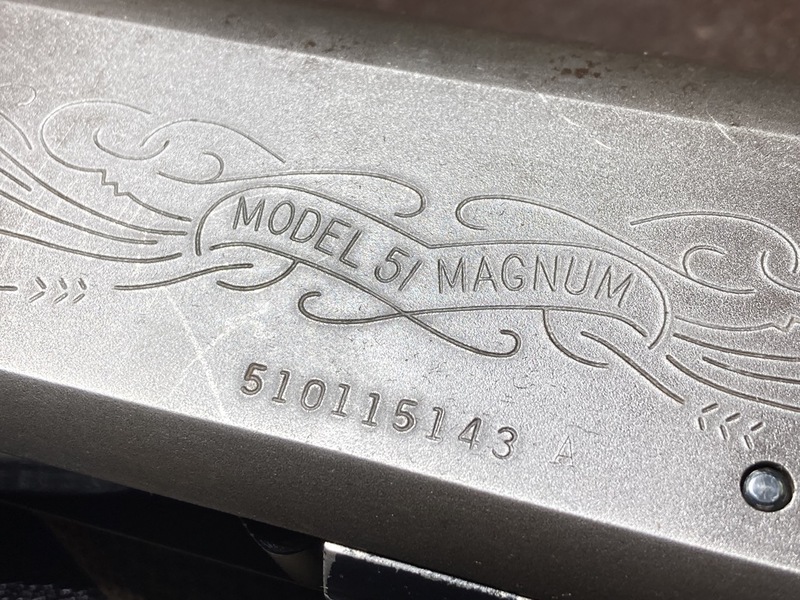
The Model 51 was produced from 1971 into the mid 80’s (I’ve read ’84 to ’87), and was touted by aficionado’s as “one of the smoothest and softest shooting” semi-auto shotguns ever made. Most prior auto-loading designs were inertia-driven… shoulder-bruisers. Gas-operated guns (I believe the Rem 58/1100 was the first) were easier going on the shoulder. The Ithaca 51 was, and is, esp comfortable to shoot due to, according to Ithaca Gun, its gas-piston design and the gun’s overall weight distribution. I can say it has always been a surprisingly comfortable gun to shoot magnum waterfowl loads through, producing a relatively gentle ‘push’ rather than a ‘punch'.
Despite the superlatives, after several seasons chasing ducks and geese over ponds, swamps, streams beds, beaver ponds, marshes, lake shores, corn stubble, and a salt marsh, (phew!), my “appreciated” 51 began to fail to consistently cycle rounds. And I eventually retired it altogether.
A bunch of years have since passed, with that 51 sitting in a dark corner of my gun safe. So, just this month, I finally got around to digging it out, taking a deep breath, and deciding her fate. I have a soft spot for old fishing reels, hunting dogs, and guns —even those merely “appreciated”. It’s a shame to let a possibly good old gun languish in disrepair, whether or not I get back to hunting with it again. So I began looking into what ails the Ithaca Model 51.
According to the experts —the Ithaca lover’s/collector’s— the 51’s slide into disrepair begins when the main “action return spring” and the two nylon “action buffers” wear down. Together, these inexpensive and easy-to-replace parts, act to cushion the blows of the bolt during cycling. This is especially important with heavy magnum loads like one would use for waterfowl. If the spring and buffers break down, the two steel “action slide bars”, housed up under the forearm, will crack and break at the weakest point. And the auto-loading mechanism fails to cycle. What you are left with is one fancy single-shot. Thus, the required maintenance for the Ithaca Model 51 then —should you ever come across one— is the replacement of the action return spring and the action buffers. These parts, remarkably, are still find-able, notably on eBay. If the work is not done, one of the slide bars, usually the left side one, will break.
Upon complete tear-down, my 51 had a weakened, rusty, action spring. One can measure it: It should be 15.5” long. If less than 14.25” it needs to be replaced. Seeing that rusty spring conjured up a flashback of my neglect: A time when the gun sling slipped off my shoulder and the gun disappeared into a muddy beaver channel. I was able to fish it out again, probing in that icy opaque water like a raccoon. I cleaned the gun well at home but never did attend to the action spring inside its steel tube, I not even knowing it was there hidden away inside the butt stock. Heck, I was a pump and double guy. What did I know about these fancy semi-automatics?

With the weakening of that spring, the rear action buffer in my gun had become smashed out of shape and cracked. In turn, the left side action slide bar had cracked. This last tends to be the final blow to most 51’s. This part, the action slide assembly, is simply unavailable; Those not in functioning 51’s, are broken. From the discussions I found online, many —likely most— 51’s have simply ended up stashed into the deepest recesses of gun safes, or dismantled and sold off for parts. Again…what a shame. So I dug deeper to see if there was a fix.
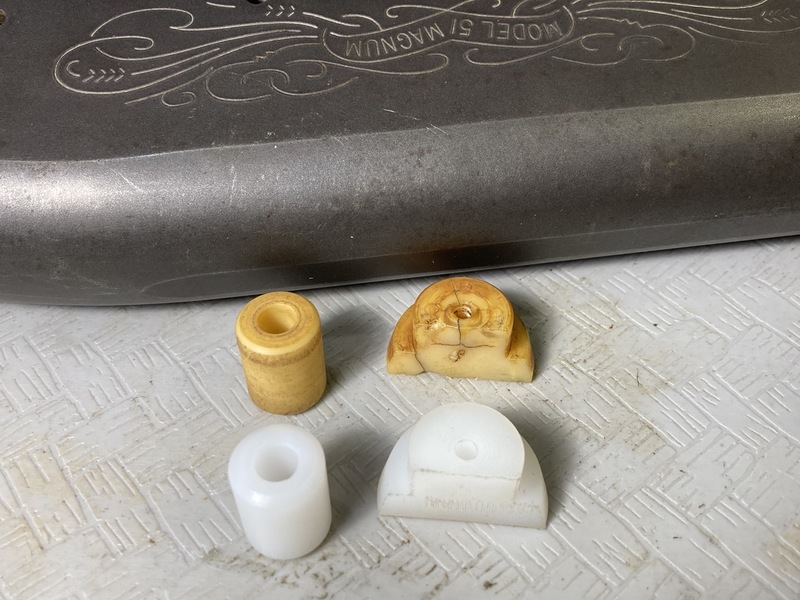
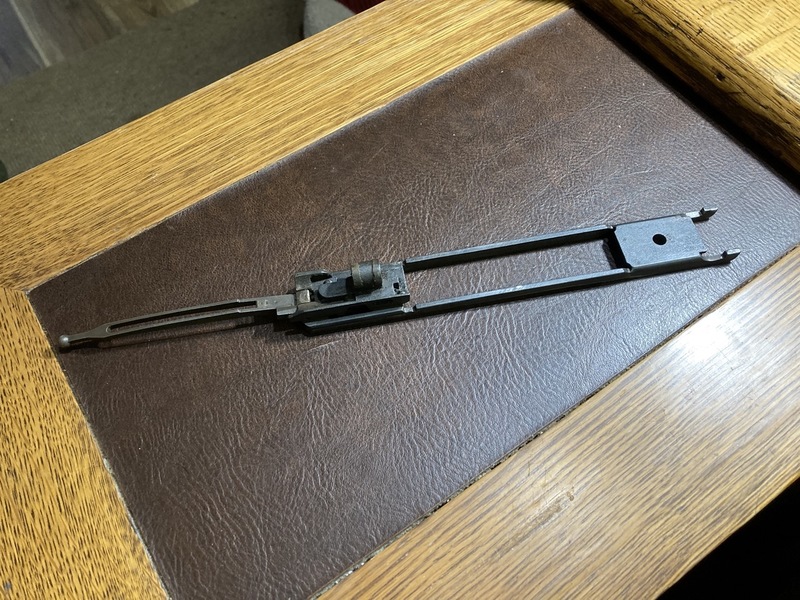

Further reading suggested that the action slide bars could be repaired, via Tungsten Inert Gas (TIG) welding. I happen to have a neighbor who runs a metal fabrication shop, so I ran the action slide assembly over to him. He looked at it and said, “Go get a cup of coffee and I’ll have it for you.” Pow! Just like that! He said he couldn’t guarantee how long it might hold, of course. But it was a promising start. Fingers crossed.
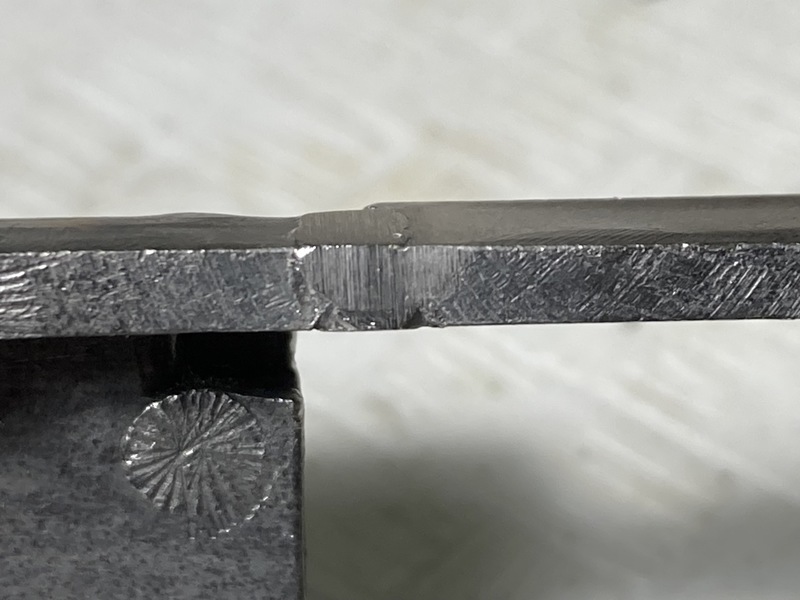
I then searched out and found an OEM return spring and buffers, as a package, from Nathan Ellis in the Ithaca, NY, area who had acquired some of the remaining original Ithaca Gun parts stock. He can be reached at nellisn32@gmail.com. Owing to the forces exerted on these parts, and my gun being a magnum model, I decided to affix a leather cushion onto the face of the nylon rear buffer, using a urethane glue. The idea being to help cushion the blow-back on my Magnum model, further protecting the buffer and, in turn, the welded slide bar. Keeping my fingers crossed.

The last bit of servicing involved a thorough tear-down and cleaning of the two barrel’s gas pistons and ports. In so doing I discovered that the 30” barrel had both gas ports open. I have been told that the 51 Magnum came from the factory with only one gas port open, to spare the action the concussive force from magnum loads. Apparently, a former owner of my gun had had the 2nd port opened on the 30” barrel, probably to shoot lighter non-magnum —likely clay-target— loads. This could explain the damage my gun had suffered, as I used that 30” 2-ported barrel for geese, using heavy 3” loads. Ouch! That barrel is now properly labeled for light loads only.
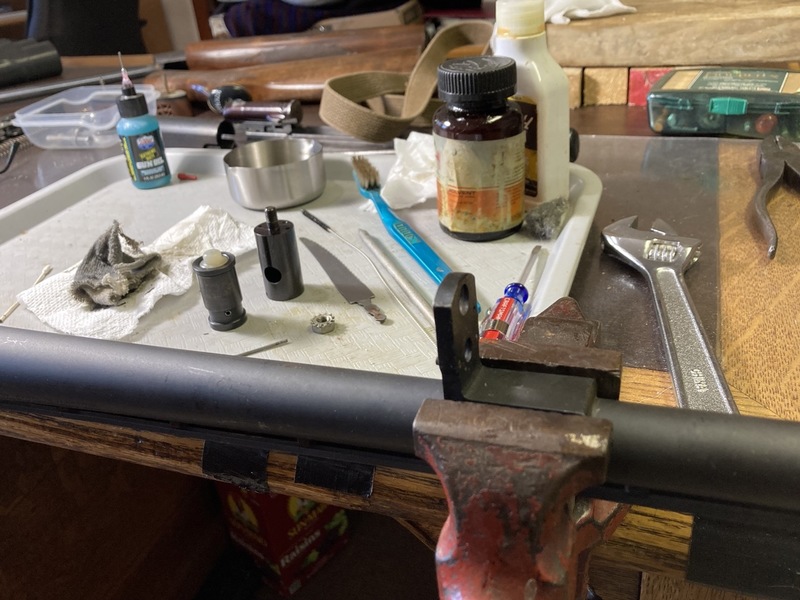
So… after a month of research, conversations with other 51 “appreciators", and some work, I got to run some “high brass” loads through my 51. And…she cycled perfectly, spitting those empty casings 5-6ft out from the gun, indicating that the action is likely receiving a proper amount of gas blow-back. My old workhorse Ithaca Model 51A Magnum is now back in working order. Here’s to hoping it will remain so for some time to come.
I went ahead and ordered another new action spring to send along to the next owner down the line, when that day comes. As to the next chapter for that gun, I doubt I’ll be waterfowling anymore, owing in large part to the fact that my beloved Labrador has long since departed. (Gosh they just don’t live long enough.) It would make a good —maybe now even better appreciated— turkey gun. Regardless, there isn’t a broken shotgun —an old friend of sorts— niggling at me from the back of my gun safe anymore.
